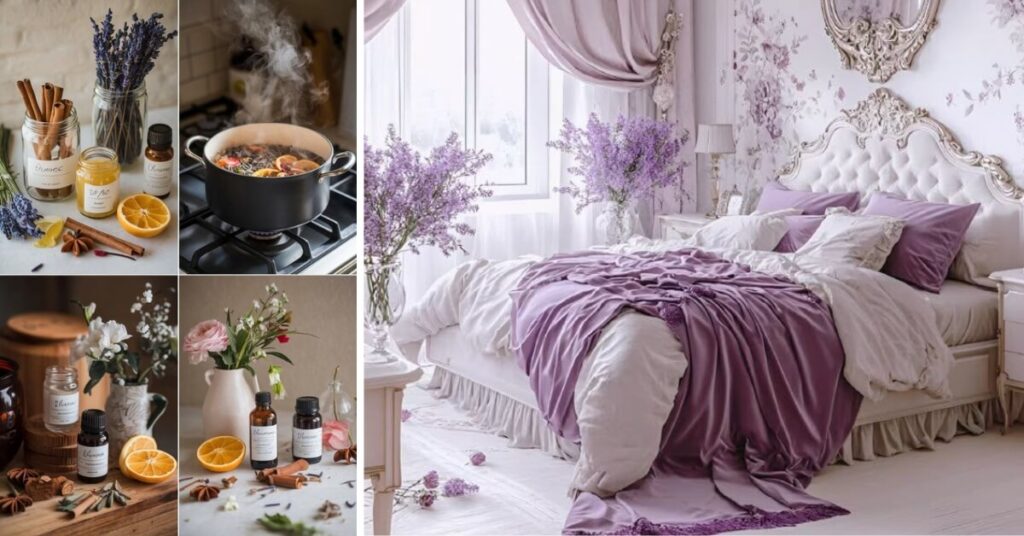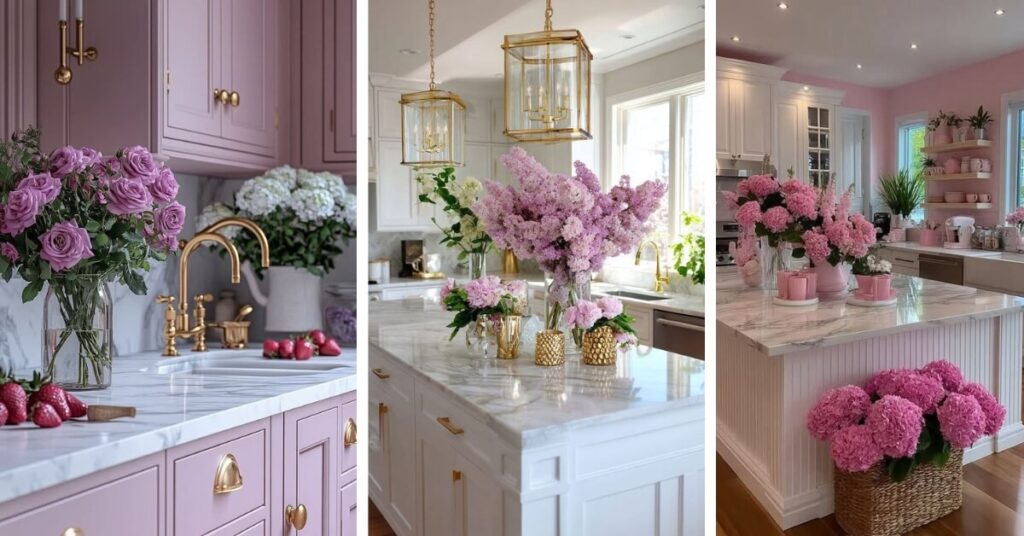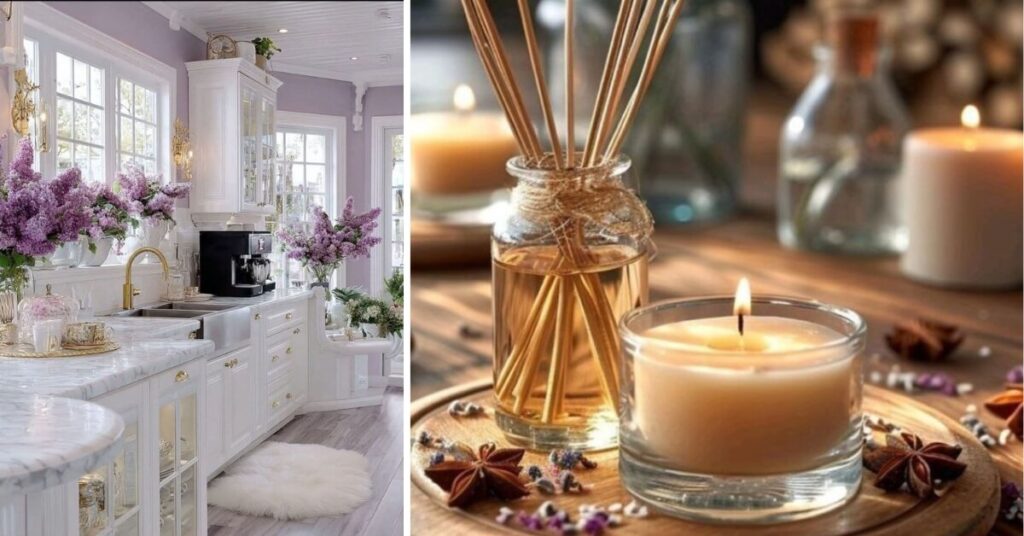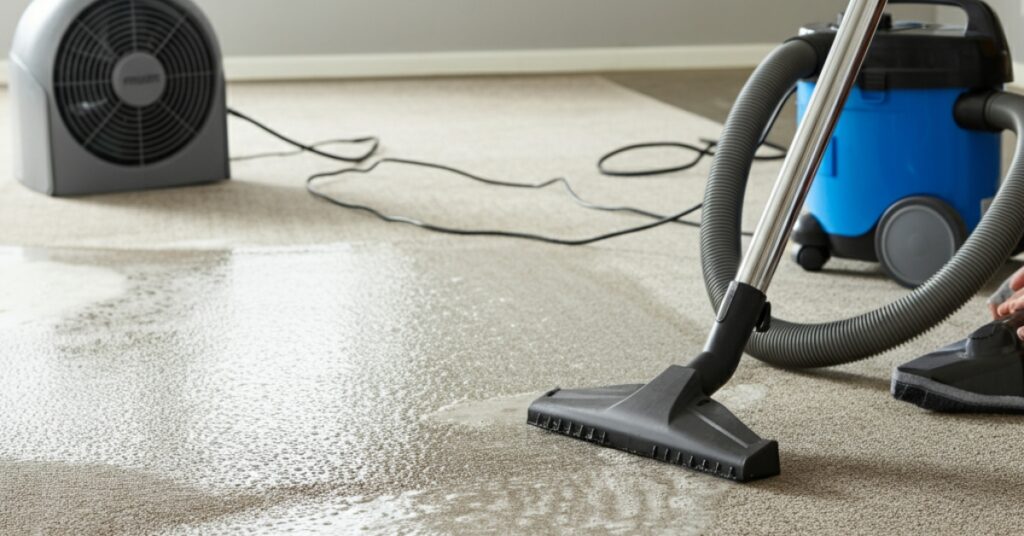As an Amazon Associate, I earn from qualifying purchases.
Having a home that feels fresh and inviting requires more than just regular cleaning. Knowing how to make your home smell good can turn your space into a cozy sanctuary that reflects your personality and care for your surroundings. Whether you are expecting visitors or simply want to enjoy a more pleasant daily environment, the right scent methods can make a big difference.

The process of improving your home’s scent begins with locating sources of unwanted odors and removing them. Once these odors are gone, you can introduce pleasant fragrances in a structured way, layering scents that complement each other. This method ensures that your home smells clean and welcoming over time rather than temporarily masking odors.
Why a Home That Smells Good Matters
A home with enjoyable fragrances can have a positive impact on both your mood and social interactions. Studies indicate that certain scents help reduce stress, improve focus, and lift spirits within minutes. In addition, pleasant smells create positive associations that make a house feel more like a comforting sanctuary.
When guests enter, the first impression is often influenced by the scent. A home that smells clean communicates attention to detail and care for the space. On the other hand, unpleasant odors can detract from even the most beautifully decorated rooms, making visitors uncomfortable regardless of your efforts.
Maintaining good home aromas also reflects overall cleanliness and organization. Many common household odors indicate issues such as poor ventilation, hidden damp areas, or insufficient cleaning routines. Tackling these problems while adding pleasant scents promotes a healthier environment for everyone in the home.
How to Make Your House Smell Good (Step-by-Step)

Identify and Remove Sources of Odor
Before adding any fragrance, find and eliminate existing odors. Walk through each room and note musty, stale, or unpleasant smells. Common problem areas include trash bins, pet zones, laundry baskets, and poorly ventilated spaces like basements or closets.
Look for hidden moisture sources that may cause musty smells. Inspect windows, under sinks, and behind appliances for leaks or poor airflow. Also, check air vents and replace HVAC filters regularly, as dirty filters can spread stale air throughout the home.
Make a list of problem areas and address them based on frequency and severity. High-use areas like kitchens and bathrooms should be prioritized, while storage or less-used spaces can be included in regular maintenance routines. Keep your high-traffic areas clean daily to help your home smell fresh. Read our guide on How to Clean High Traffic Areas to avoid common mistakes.
Thorough Cleaning of Key Areas
Deep cleaning is the foundation for a well-scented home. Start with trash bins, which often harbor bacteria and lingering odors even after emptying. Clean bins with hot, soapy water and add a layer of baking soda before placing fresh liners.
Kitchen and bathroom drains can collect organic matter that produces persistent odors. Pour boiling water down drains weekly, then follow with a mixture of baking soda and white vinegar. This combination helps remove buildup and neutralizes smells effectively. Carpets and upholstered furniture can trap odors over time, especially in homes with pets or heavy cooking. Vacuum thoroughly, including corners and under furniture, and treat stubborn spots with enzyme-based cleaners that target organic odors.
Introduce Pleasant Fragrances Thoughtfully
After removing odors, begin layering fragrances across your home. Start with light base scents in central areas like living rooms or hallways. These scents should be noticeable but not overpowering.
Use different scents in each room rather than repeating the same fragrance everywhere. This helps create variety and defines each space. Make sure scents harmonize instead of clashing.Introduce scents at the right time for maximum effect. Turn on diffusers or light candles about 30 minutes before visitors arrive so aromas disperse naturally without becoming overwhelming.
Best Sources of Pleasant Fragrances: Natural, DIY, and Store-Bought
Essential Oils and Diffusers
Essential oils offer concentrated, natural fragrances with therapeutic benefits. Popular choices include lavender for calming, peppermint for energy, and eucalyptus for a fresh feel. High-quality oils last longer and provide better results.
Ultrasonic diffusers release oils evenly without heat, preserving their natural properties while adding a touch of humidity to dry air. Reed diffusers provide continuous fragrance without electricity, ideal for low-maintenance scenting. Replace reeds monthly and refill containers as needed.
Scented Candles and Wax Melts
Quality candles add ambiance while releasing controlled fragrances. Opt for natural waxes such as soy or beeswax for cleaner, longer-lasting burns. Cotton wicks help reduce soot and ensure even burning.
Wax melts are safe alternatives without open flames, perfect for homes with pets or children. Electric or tea-light warmers distribute scents steadily. Rotate fragrances seasonally and store unused products in cool, dry conditions to preserve their potency.
Simmer Pots and Stovetop Potpourri
Simmer pots create natural fragrances using common household ingredients. Combine water with citrus peels, cinnamon sticks, herbs, or vanilla in a saucepan or slow cooker on low heat. This method spreads inviting aromas while adding light humidity.
Seasonal variations enhance the effect. Spring blends may use lemon and fresh herbs, while winter blends could feature orange peels, cloves, and pine. Always monitor water levels and never leave simmer pots unattended.
Air Fresheners and Sprays
Commercial air fresheners provide fast scent solutions. Select products that neutralize odors rather than just mask them. Fabric sprays refresh curtains, furniture, and bedding between washes. Enzyme-based options are more effective at breaking down odor-causing compounds.
DIY sprays combine cost-effectiveness with results. Mix water, white vinegar, and a few drops of essential oils in a spray bottle to freshen air naturally while eliminating odors.
Room-Specific Scent Strategies
Kitchen Freshness Solutions
Kitchens need clean, energizing scents that complement cooking. Citrus aromas like lemon, lime, and orange help neutralize odors naturally. Fresh herbs like basil, rosemary, and mint provide natural, pleasant fragrances.
Place a small bowl of baking soda with essential oils in the fridge to absorb odors and add subtle fragrance. Replace monthly. Grind citrus peels in the garbage disposal weekly for freshness. Potted herbs on counters or windowsills provide both aroma and decoration.
Bathroom Aromatherapy
Bathrooms require strong scents to handle humidity and frequent use. Eucalyptus provides fresh, spa-like smells with natural antimicrobial benefits. Lavender creates a calming atmosphere for relaxing after a long day.
Improve ventilation to prevent moisture buildup, which can create musty odors. Hang eucalyptus bundles on shower heads or towel bars for natural aromatherapy. Replace bundles every few weeks or when the scent fades.
Living Room Comfort Scents
Living rooms are gathering areas that benefit from warm, inviting fragrances. Vanilla creates a cozy environment, while sandalwood adds a grounding, sophisticated touch.
Layer scents for complexity by combining reed diffusers with candles during special occasions. Match fragrances to furniture and décor for the best effect. Leather pairs well with woody scents, while airy spaces benefit from light, clean aromas.
Bedroom Relaxation Fragrances
Bedrooms require subtle, calming scents to support rest. Chamomile helps with relaxation and sleep. Rose adds a gentle elegance.
Avoid strong fragrances that may cause headaches or sleep disruption. Place small sachets in drawers or closets for light, continuous fragrance. Use breathable fabrics like cotton or linen to allow scents to circulate naturally.
Fresh Flowers and Seasonal Aromas
Maintaining a pleasant-smelling home requires consistency and seasonal updates. Routine cleaning prevents odors from building up, while layering scents creates a welcoming environment that reflects your care. Subtle, natural approaches often work better than overpowering single-source fragrances.
Experiment with seasonal combinations to keep scents fresh and suitable for any occasion. Natural methods generally provide longer-lasting aromas and better indoor air quality than chemical alternatives. Focus on scents that make you feel happy and comfortable. Start gradually, trying one room or method at a time. With patience and routine, your home can consistently welcome family and guests with fresh, inviting fragrances.
Natural and Eco-Friendly Ways to Freshen Your Home

Another effective way to make your house smell good is by using natural, eco-friendly methods instead of chemical sprays. Herbs, dried flowers, and natural ingredients such as basil, mint, or spices instantly lift any room. Cinnamon, nutmeg, or baking soda-based sprays can neutralize odors naturally.
DIY mixes of baking soda and cinnamon, or lemon and apple cider vinegar, create potent air fresheners. Fresh fruits, citrus peels, and dried flowers also provide natural fragrance. Diffusers and potpourri spread aroma without chemicals. These methods are especially safe for homes with pets, helping remove strong odors without harm. Using plants, fruits, and natural spices offers a simple, chemical-free approach to keeping your home fresh.
Frequently Asked Questions
1. How can I make my house smell good naturally?
Yes, using essential oils, citrus peels, fresh herbs, and baking soda can naturally freshen your home. Simmer pots with natural ingredients also work well.
2. What are the best essential oils for a fresh-smelling home?
Lavender for calming, lemon for freshness, eucalyptus for clean air, and peppermint for energy are all excellent options.
3. How often should I refresh scent sources?
Refresh scent sources every 2–4 weeks depending on type. Reed diffusers need new reeds monthly, and essential oils should be replaced when their strength fades.
4. Can baking soda help remove odors?
Yes, baking soda effectively absorbs and neutralizes household odors. Place containers in the fridge, closets, or enclosed spaces and replace monthly.
5. How can I manage pet odors effectively?
Yes, regular grooming, washing pet bedding, enzyme-based cleaners for accidents, and air purifiers in pet areas help control odors.
As an Amazon Associate, I earn from qualifying purchases.




